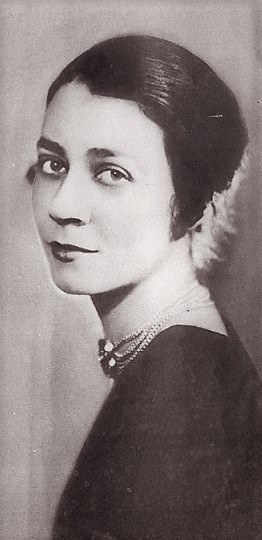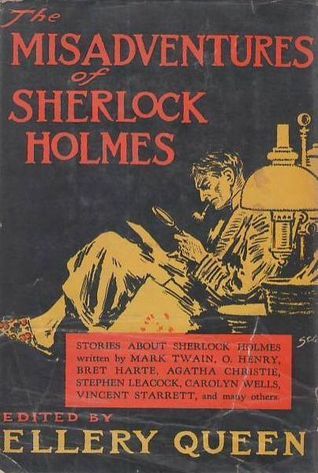Related Research Articles

David Llewellyn Harding, known professionally as Lyn Harding, was a Welsh actor who spent 40 years on the stage before entering British made silent films, talkies and radio. He had an imposing and menacing stage presence and came to be cast as the villain in many films, notably Professor Moriarty in dramatisations of the Sherlock Holmes stories.

"The Adventure of the Speckled Band" is one of 56 short Sherlock Holmes stories written by Sir Arthur Conan Doyle, the eighth story of twelve in the collection The Adventures of Sherlock Holmes. It was originally published in Strand Magazine in February 1892.
The stories of Sherlock Holmes by Sir Arthur Conan Doyle have been very popular as adaptations for the stage, and later film, and still later television. The four volumes of the Universal Sherlock Holmes (1995) compiled by Ronald B. De Waal lists over 25,000 Holmes-related productions and products. They include the original writings, "together with the translations of these tales into sixty-three languages, plus Braille and shorthand, the writings about the Writings or higher criticism, writings about Sherlockians and their societies, memorials and memorabilia, games, puzzles and quizzes, phonograph records, audio and video tapes, compact discs, laser discs, ballets, films, musicals, operettas, oratorios, plays, radio and television programs, parodies and pastiches, children's books, cartoons, comics, and a multitude of other items — from advertisements to wine — that have accumulated throughout the world on the two most famous characters in literature."
Arthur Wontner was a British actor best known for playing Sir Arthur Conan Doyle's master detective Sherlock Holmes in five films from 1931 to 1937.

Traditionally, the canon of Sherlock Holmes consists of the 56 short stories and four novels written by Sir Arthur Conan Doyle. In this context, the term "canon" is an attempt to distinguish between Doyle's original works and subsequent works by other authors using the same characters. Usually capitalized by aficionados of the Sherlockian game as "the Canon", the description of these 60 adventures as the Sherlock Holmes canon and the game of applying the methods of "Higher Criticism" to it was started by Ronald Knox as a playful use of the traditional definition of canon as an authoritative list of books accepted as holy scripture.
Mrs. Hudson is a fictional character in the Sherlock Holmes novels and short stories by Arthur Conan Doyle. She is the landlady of 221B Baker Street, the London residence in which Sherlock Holmes lives.

The Speckled Band is a 1931 British mystery film directed by Jack Raymond and starring Lyn Harding, Raymond Massey and Angela Baddeley. It is an adaptation of Arthur Conan Doyle's original 1892 story "The Adventure of the Speckled Band" and the 1910 play he adapted from it, The Speckled Band.

Harry Arthur Saintsbury, usually called H. A. Saintsbury, was an English actor and playwright. A leading man, he became well known for his stage interpretation of Sherlock Holmes, was an early mentor of Charlie Chaplin, and is considered an authority on the work of Sir Henry Irving.

The Hound of the Baskervilles is a 1983 British made-for-television mystery thriller film directed by Douglas Hickox, starring Ian Richardson as Sherlock Holmes and Donald Churchill as Dr. John H. Watson. It is based on Arthur Conan Doyle's 1902 novel The Hound of the Baskervilles.
Sherlock Holmes and Sir Arthur Conan Doyle's Sherlock Holmes are two British series of Sherlock Holmes adaptations for television produced by the BBC in 1965 and 1968 respectively. The 1965 production, which followed a pilot the year before, was the second BBC series of Sherlock Holmes adaptations, after one starring Alan Wheatley in 1951.
Sherlock Holmes is a film series running from 1931 to 1937. Arthur Wontner portrayed Sherlock Holmes in five films.
The Valley of Fear is a British silent adventure film of 1916 directed by Alexander Butler and starring Harry Arthur Saintsbury, Daisy Burrell and Booth Conway. The film is an adaptation of the 1915 novel, The Valley of Fear by Arthur Conan Doyle featuring Sherlock Holmes. This is now considered a lost film.

Sherlock Holmes is a four-act play by William Gillette and Sir Arthur Conan Doyle, based on Conan Doyle's character Sherlock Holmes. After three previews it premiered on Broadway November 6, 1899, at the Garrick Theatre in New York City.
From 1921 to 1923, Stoll Pictures produced three series of silent black-and-white films based on Sir Arthur Conan Doyle's Sherlock Holmes stories. Forty-five short films and two feature-length films were produced featuring Eille Norwood in the role of Holmes and Hubert Willis cast as Dr. Watson with the exception of the final film, The Sign of Four, where Willis was replaced with Arthur Cullin. Consequently, Norwood holds the record for most appearances as Sherlock Holmes in film.
The Adventures of Sherlock Holmes is an American old-time radio show that aired on US radio networks between 1930 and 1936. The series was adapted from Sir Arthur Conan Doyle's Sherlock Holmes stories by scriptwriter Edith Meiser. For most of the series, Richard Gordon played Sherlock Holmes and Leigh Lovell played Dr. Watson.

Edith Meiser was an American author and actress, who wrote mystery novels, stage plays, and numerous radio dramas. She is perhaps best known for bringing adaptations of Sherlock Holmes stories to radio in the 1930s.
Sherlock Holmes is a French–British silent film series consisting of eight short films which were produced in 1912 by Éclair.
Sherlock Holmes is the overall title given to the series of radio dramas adapted from Arthur Conan Doyle's Sherlock Holmes stories that aired between 1952 and 1969 on BBC radio stations. The episodes starred Carleton Hobbs as Sherlock Holmes and Norman Shelley as Dr. Watson. All but four of Doyle's sixty Sherlock Holmes stories were adapted with Hobbs and Shelley in the leading roles, and some of the stories were adapted more than once with different supporting actors.

The Misadventures of Sherlock Holmes is an anthology of thirty-three Sherlock Holmes pastiches and parodies, first published in 1944.
References
- 1 2 3 4 5 6 7 8 9 10 11 12 13 14 15 16 Boström 2018, pp. 147–148.
- 1 2 3 Bunson 1997, pp. 246–247.
- ↑ Boström 2018, p. 102.
- 1 2 3 Starrett 1993, pp. 145–146.
- ↑ Barnes 2002, p. 196.
- ↑ Boström 2018, p. 115.
- ↑ Redmond 2009, p. 114.
- ↑ DeWaal 1974, p. 366.
- 1 2 3 Redmond 2009, p. 221.
- 1 2 3 4 Eyles 1986, p. 130.
- ↑ DeWaal 1974, p. 367.
- ↑ Bunson 1997, p. 247.